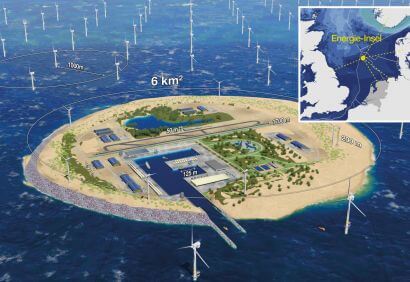An Optimistic Look At Our Energy Future

In large measure, it’s a function of what happens with nuclear. If the promise of “advanced nuclear,” say, liquid fluoride thorium reactors, is achieved, the game looks very different than it does in its absence. Having said that, we’ve been saying that “we’re 30 years away,” since the 1950s, so there is some reason for skepticism here.
If affordable, safe, and low-carbon energy is to win the day without nuclear, we can expect, or at least hope, to see some very large-scale deployments of solar and wind. One such plant is already underway; pictured above, it’s a massive offshore wind farm in the North Sea, which convert electricity into either hydrogen or methane that will be shared with the UK, Norway, Denmark, Germany, the Netherlands and Belgium.

Craig,
The reason why , Liquid Fluoride Thorium Reactors, and other ‘advanced nuclear plants’ haven’t been built isn’t a lack of technology, but an irrational fear of the term “Nuclear Power”, massive political opposition, (based largely on ignorance) and the massive cost associated with US style regulatory requirements.
The requirements were conceived 60-70 years ago for a totally different technology, but still remain a barrier to prevent investment in any form of nuclear power generation.
Nuclear is only now beginning to be re-assessed, but is meeting fierce opposition from the wind and Solar industries and their supporters.
Governments in the Netherlands, India, Peoples Republic of China, Russia and even the UK [ http://www.telegraph.co.uk/business/2017/10/22/designs-mini-nuclear-power-plants-proposed-rolls-royce-led-group/ ] have all invested in pilot projects the most advanced being India and Japan.
Curiously, the nation that started it all, the US, remains dormant due to powerful anti-nuclear lobbyists and Uranium interests.